What Does Joy Look Like From Inside Out
5 surprising facts about Inside Out's character design
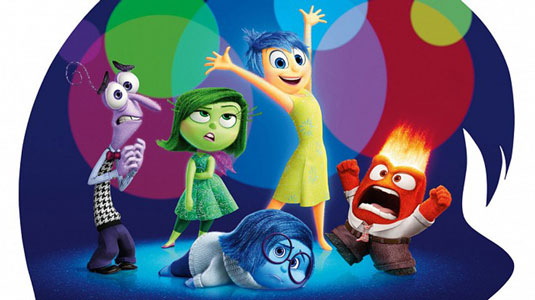
If you haven't seen Inside Out yet, buy or stream it now: it's brilliant. A true return to form for Disney/Pixar, the story follows a traumatic 24 hours in the head of a young girl (Riley) via her personified emotions (Joy, Anger, Disgust, Sadness and Fear) in a way that entertains and engages both kids and adults alike.
It's not every day a character designer has to bring an abstract concept to life, so we were intrigued how Pixar went about it. Here are five surprising things co-director Ronnie Del Carmen told us… [Note: contains mild spoilers]
01. They were the most difficult thing on the movie
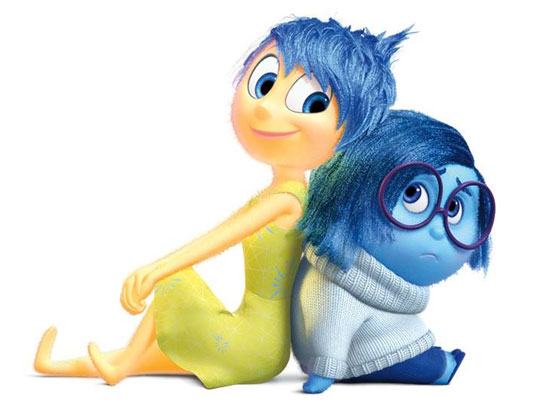
If you thought that visualising things like the subconscious, abstract thought and memory retrival in a way that kids can understand was a tricky task, you'd be right. But creating the characters for Inside Out was even MORE difficult, says Del Carmen.
"We had to create characters that no one has ever seen before, and make them care about what they care about," he points out. "These are abstract concepts that we're turning into personalities here. We wanted to find out if we could create a relationship between these characters inside a little girl's head and the girl herself.
"So for the longest time, even though it was a big challenge to show what the mind world was and try and explain how the mind works, it was a harder task to create a movie that we could feel what the characters are feeling, that we can empathise with their goals."
02. It was a looong process

All films take year to make, but Inside Out took longer than most: Pixar first started work on the movie, released this year, in 2009.
"It took a small army, leading the charge, finding ways to represent the ideas my co-director, Pete Doctor, had in his head," explains Del Carmen. "Pete and I would partner up and try to tell the story. I would do rudimentary drawings of what our characters might look like and what our initial ideas of the world might be – very very small doodles.
"Then we had the production designer come on board and he started imagining the rest of the world and how to produce it. We'd get art directors and designers, who'd go out and do research, such as visiting an egg factory to see how memories might be created and processed.
"And we'd employ animators to give us cues as to what they want to do and what they can do with these emotions. All of these things happened in synergy over a long period of time."
03. Some characters never made it
"We drew a lot of characters that didn't make it through to the movie," reveals Del Carmen. "We brainstormed a bunch of those things. We created characters like Hope, Pride, other emotions we could have put in the movie – they didn't survive."
You can see the concept art for some of these lost characters here:

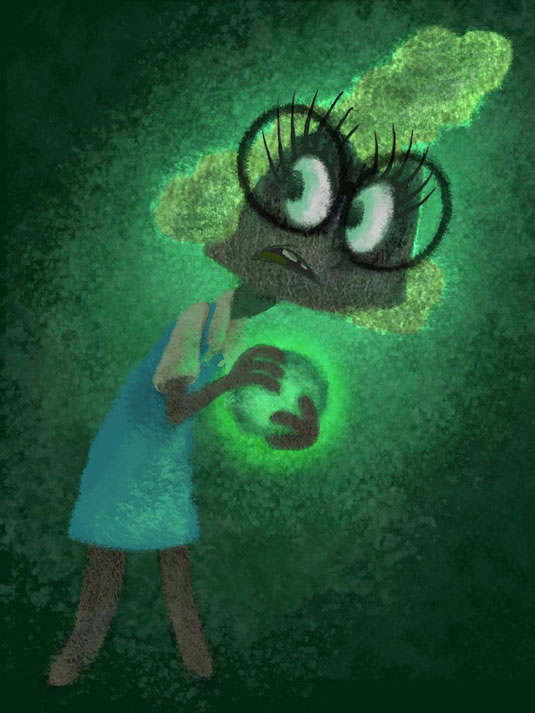
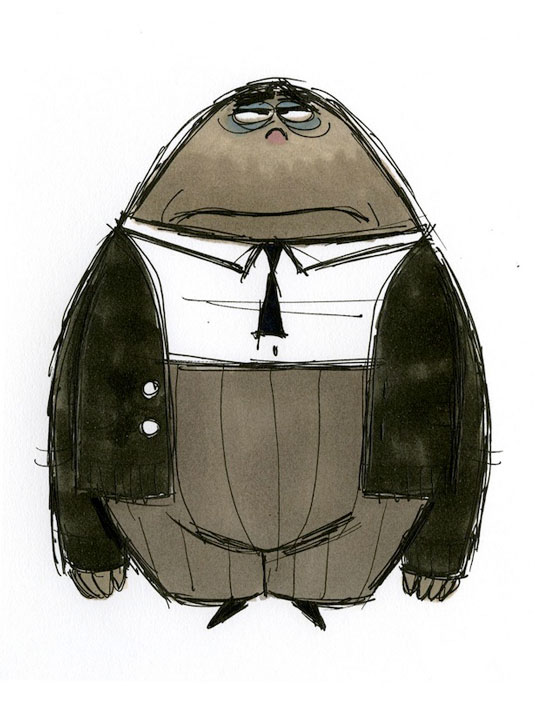
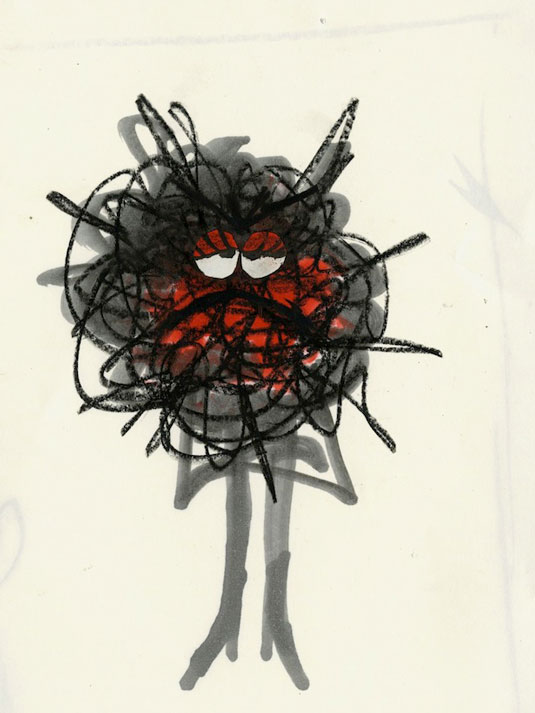

We love all of these – BUT the characters we'd most liked to have seen were the employees at 'The Department of Faces' and 'The Department of Names'. Del Carmen explains...
"These were institutions we created inside the long-term memory. We recognised that a lot of the time people can recognise a face but are terrible with names. So we created departments inside the human mind, in charge of faces, and then another department in charge of names. And those departments don't speak to each other, they hate each other.
"So that's why you may be able to recall a face but the unco-operative department of names is very very disorganised and can't come up with the right name that goes with it."
04. Some characters they got right first time
Although the animators spent years working on the detail of the characters, some of those in the finished movie are suprisingly close to Del Carmen and Pete Docter's original doodles.
"Pete has been drawing anger for just the longest time as a square with glowering eyes and a downturned mouth," says Del Carmen. "That's been the state of anger from the very beginning. And then the designers came in to flesh them out and give them more reality, so to speak."
Here's a Del Carmen masterclass on how to draw Anger...
It was a similar case for lead character Joy, voiced by Amy Poehler. "Our ideas for Joy remained very proscribed inside an idea that Pete and I had about what she was going to be about from the very beginning.
"Certain details would change in terms of her hairstyle and what she was wearing. But her personality was very much kind of what we like we wanted to be. And the help of Amy was invaluable: she made Joy come alive in ways we could only have hoped and prayed for."
05. They're too exhausted to make a sequel
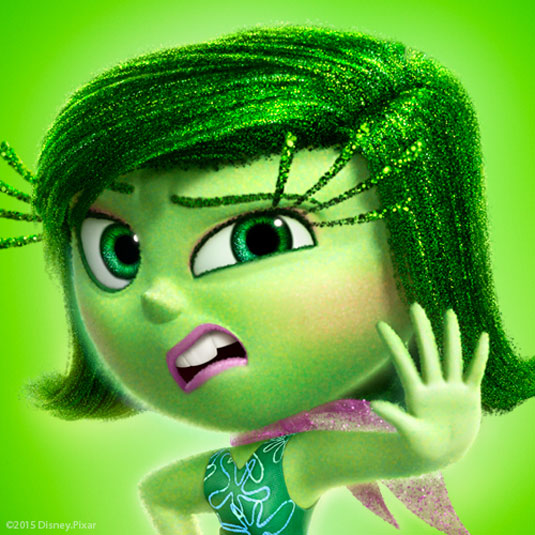
Despite the fact that many characters and scenes were left on the cutting room floor, Del Carmen dismisses talk of using them in a sequel. "When we were making those sequences we were hopefully trying to fit it into this one movie," he says.
"All of our energies have gone into finishing this movie, and it was only released a couple of months ago. Five years of making a movie – anything actually – is pretty exhausting. So we're going to take a break. Right now, I'm taking it easy. I'm helping out with classes in storytelling and helping out on various little projects."
If you're still craving more Inside Out goodness though, here's something that may sate you: a special short released by Disney in August called 'Riley's First Date'...
Bonus: 5 more suprising facts about Inside Out
- Some of the main characters have intentional shapes: Anger is shaped like a brick, Joy a star, Sadness a teardrop and Fear is tall and thin like a nerve.
- Joy's green dress and blue hair were added to keep her from being overly similar to Tinker Bell (although that did lead her to be compared with Marge Simpson in early press reports).
- Character art director Albert Lozano originally sketched Sadness in her pyjamas, figuring a depressed person would stay in bed all day.
- A sixth character of Surprise was eventually subsumed into the Fear character.
- According to David Lally, a tech artist at Pixar, all the broccoli from "Inside Out" was swapped out with green peppers for the Japanese version. [Culturally, these vegetables are the biggest bugbear of that nation's children when urged to 'eat their greens'].
Inside Out is released on Blu-ray and DVD on 23 November courtesy of Disney Pixar.
Like this? Read these...
- Disney artists bid to recapture classic hand-drawn animation
- Artists react to Disney princess pin-ups
- How to get a job at Disney

Tom May is a freelance writer and editor specialising in design, photography and tech. He is author of Great TED Talks: Creativity, published by Pavilion Books. He has previously been editor of Professional Photography magazine, associate editor at Creative Bloq, and deputy editor at net magazine.
Related articles
What Does Joy Look Like From Inside Out
Source: https://www.creativebloq.com/animation/inside-out-character-design-111517644
Posted by: jacksoncomusn.blogspot.com

0 Response to "What Does Joy Look Like From Inside Out"
Post a Comment